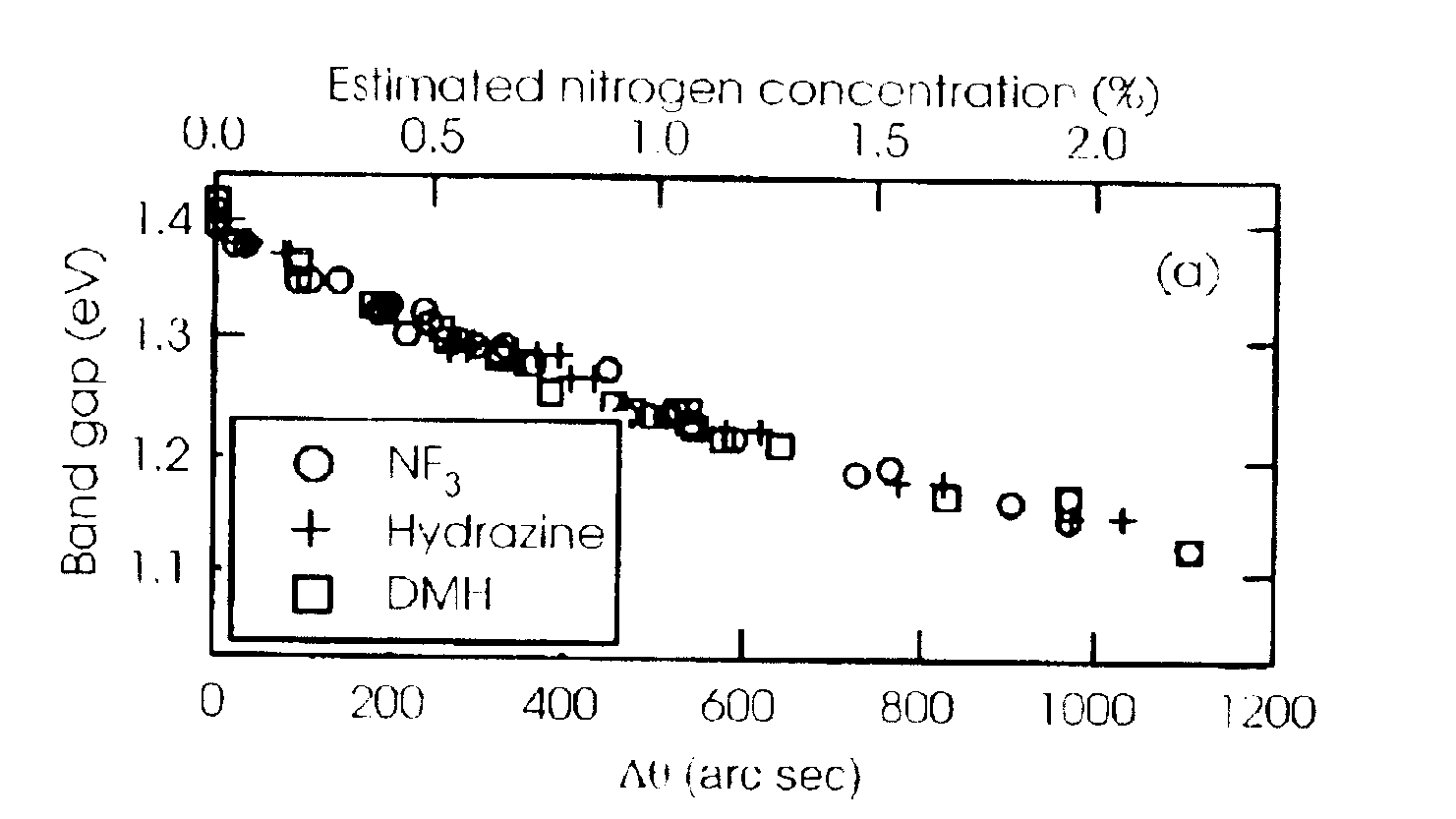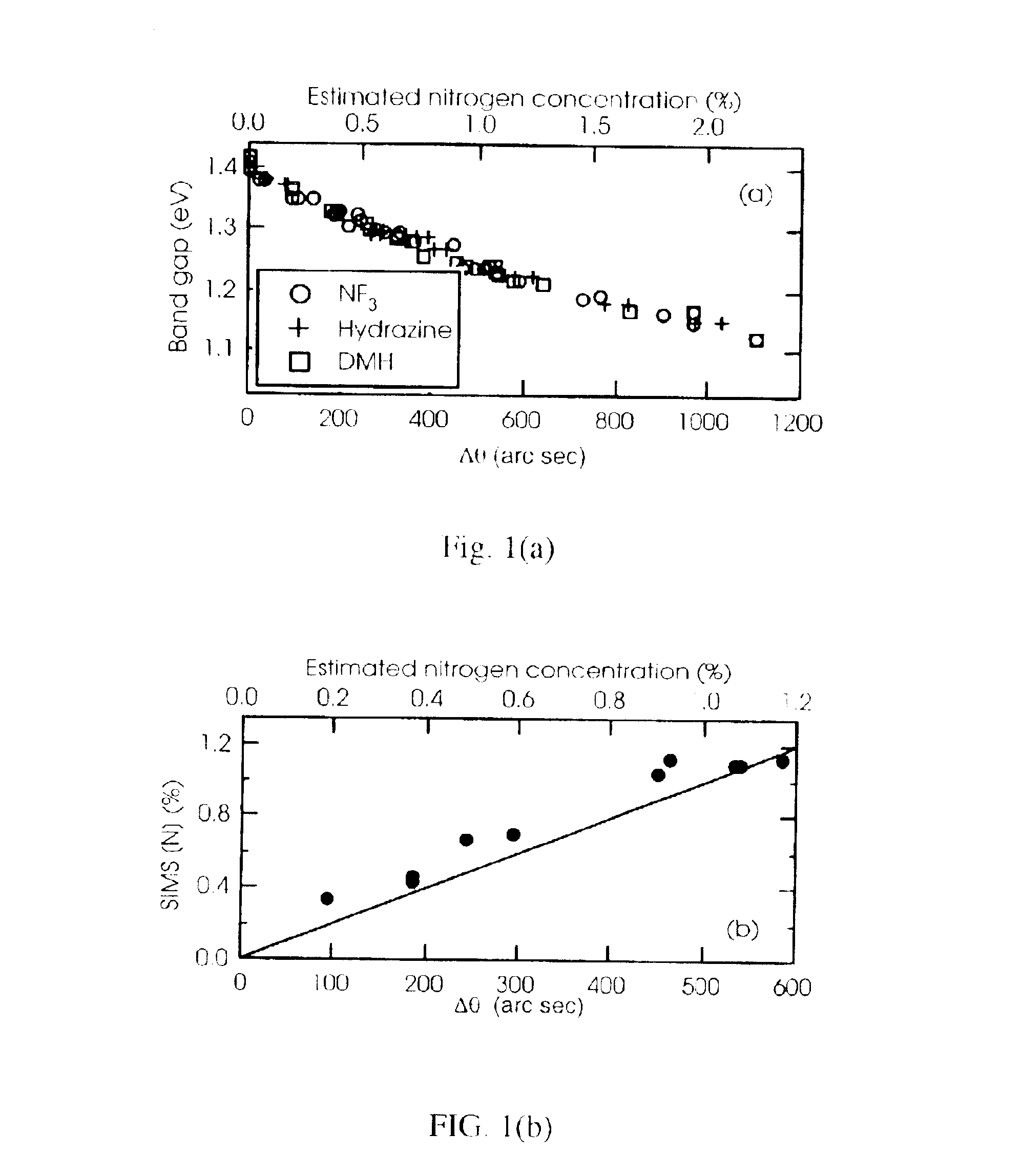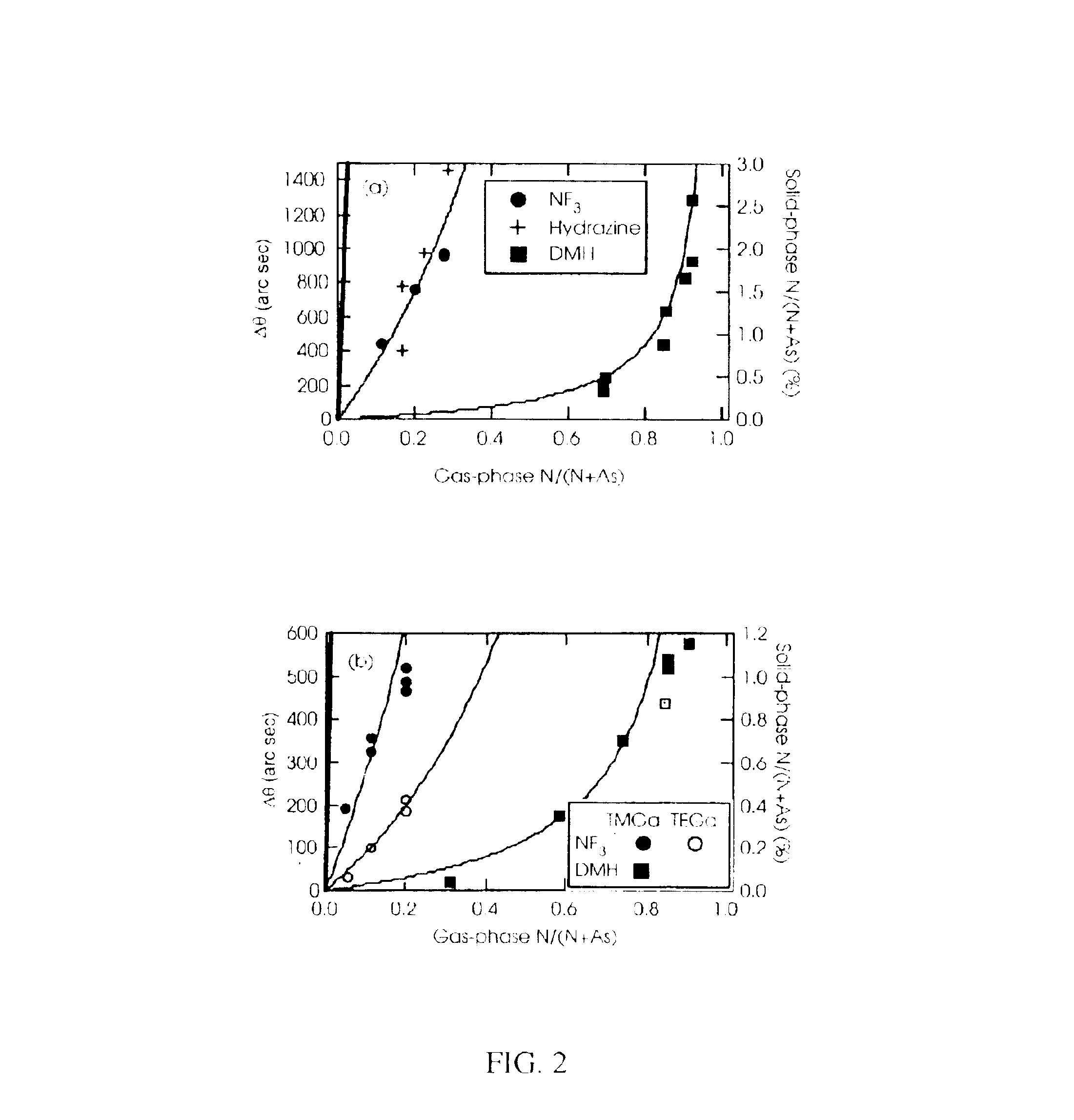Method of preparing nitrogen containing semiconductor material
a technology of nitrogen and semiconductor materials, applied in the direction of crystal growth process, polycrystalline material growth, chemically reactive gas, etc., can solve the problems of low efficiency, low efficiency, and inability to grow photovoltaic cells,
- Summary
- Abstract
- Description
- Claims
- Application Information
AI Technical Summary
Problems solved by technology
Method used
Image
Examples
example 1
Addition of NF.sub.3 to GaAs Reduces Alloys Band Gap and Lattice Constant
Materials and Methods
The GaAsN epilayers were grown by vertical-flow, atmospheric-pressure, metal organic chemical vapor deposition (MOCVD) on GaAs substrates misoriented 2.degree. from the (100). The GaAs wafers rested on a graphite susceptor heated by radio frequency power. Arsine, timethylgallium (TMGa), triethylgallium (TEGa), u-dimethylhydrazine, and NF.sub.3 were used in a 6 slm flow of palladium-purified-hydrogen carrier. The arsine pressure was approximately 0.2 torr for the majority of the runs, although in a few runs the pressure was higher.
Note that use of hydrazine, a rocket fuel, and DMH raise serious safety issues, where the combustion of either compound is strongly exothermic. As such both compounds must be used with extreme care. NF.sub.3, on the other hand, is not a fuel, but rather an oxidizer. Oxidizers in the reducing environment provided by hydrogen mixed with arsine gas presents a potentia...
example 2
NF.sub.3 is a More Efficient Nitrogen Source Than DMH
Materials and Methods:
MOCVD nitrogen incorporation efficiency was determined by varying the N / As ratio (changing nitrogen flow), while maintaining a constant growth temperature of 550.degree. C., growth rate of 4 .mu.m / hr, and trimethylgallium as gallium source.
Results and Discussion:
Nitrogen incorporates into GaAs by MOCVD much more efficiently from NF.sub.3 than from DMH, as shown in FIG. 2. In fact, NF.sub.3 is incorporated into the GaAs with about the same efficiency as using hydrazine as the nitrogen source. Under these growth conditions, having constant arsine flow, the incorporation of nitrogen in GaAs is approximately linear with NF.sub.3 / (NF.sub.3 +As) or the concentration of DMH, respectively.
Note that the line at the left side of FIG. 2 shows the data expected if the N / As ratio in the film were the same as in the gas phase, demonstrating that the incorporation efficiency of nitrogen in GaAs by MOCVD is low, regardless ...
example 3
Nitrogen Incorporation into Gallium Arsenide is Temperature Dependent
Materials and Methods:
Epilayer growth conditions were essentially as described in Example 1. A growth rate of 4 .mu.m / hr was used for temperatures that varied from between 550.degree. C. to 700.degree. C. Nitrogen incorporation was as described in Example 1. To measure growth rate of the nitrogen incorporating alloys, all alloys were calibrated by measuring the thickness of a GaAs epilayer. This was completed using TMGa, and then again for TEGa. The TMGa and TEGa flows and the times of the growths were adjusted to grow 1 .mu.m of material, based on the calibration runs.
With regard to NF.sub.3 flow in FIG. 5, a flow of between 0.5 and 2 sccm was used and the growth rate was 2 .mu.m / hr at 550.degree. C.
Results and Discussion:
FIG. 3 illustrates the incorporation of nitrogen as a function of the growth temperature for three nitrogen precursors, NF.sub.3, hydrazine and DMH, and two gallium precursors, TMGa and TEGa. For...
PUM
| Property | Measurement | Unit |
|---|---|---|
| temperature | aaaaa | aaaaa |
| temperature | aaaaa | aaaaa |
| pressure | aaaaa | aaaaa |
Abstract
Description
Claims
Application Information
 Login to View More
Login to View More - R&D
- Intellectual Property
- Life Sciences
- Materials
- Tech Scout
- Unparalleled Data Quality
- Higher Quality Content
- 60% Fewer Hallucinations
Browse by: Latest US Patents, China's latest patents, Technical Efficacy Thesaurus, Application Domain, Technology Topic, Popular Technical Reports.
© 2025 PatSnap. All rights reserved.Legal|Privacy policy|Modern Slavery Act Transparency Statement|Sitemap|About US| Contact US: help@patsnap.com



